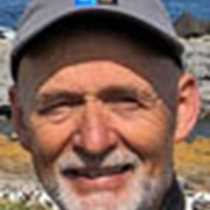Runde and Selje, Norway
In the early morning we found ourselves at the island of Runde - 62° 24 north and 5° 3´4 east. More than seven degrees of latitude had been covered since we started our voyage in Tromsø at N 69° 39, E 18° 58´. Runde is Norway´s southernmost birdrock for seabirds. A half million seabirds breed on these jagged cliffs. The nesting area is protected by strict government regulations, and from visitors by forbidding terrain. The previous days of rainy and grey weather had finally been replaced by more friendly weather. The low swell allowed for a Zodiac cruise after breakfast. We zigzagged between rafts of feeding puffins and guillemots. Swarms of gannets filled the sky as we passed the island´s most spectacular nesting colony. Puffins sitting by their burrows could be seen in the green slopes up above. During the breeding season Runde hosts more than100,000 pairs of puffins and 50,000 pairs of kittiwakes. But due to their visible nesting cliffs and flight activity the nearly 2,000 pairs of gannets display the most impressing element to the visitor. During our Zodiac cruise we also observed a great number of razorbills, common guillemots, black guillemots and shags. Some guests spotted a couple of great skuas and white-tailed eagles. The first sighting of wild mammals on this voyage – a grey seal - showed up just by the lighthouse at the western end of the island.
At lunchtime the weather turned into blue skies and hardly any wind. We learned that this was one of the very few warm days in Norway so far this summer. After lunch some guests chose a Zodiac cruise, whereas many preferred to be set ashore at the island of Selje. This island is one of the northernmost outposts of Sogn og Fjordane county, on the western edge of Norway. We walked a few hundred yards up to the medieval ruins of Selje monastery and the church of St Sunniva. These ruins date from the 11th and 12th centuries, respectively. According to the legend St Sunniva was an Irish princess who was promised to a Viking chief. As she refused to marry the Viking, she fled on an ill-equipped boat across the North Sea. She and her followers were wrecked on Selje. Here they lived in isolation and started a cult. The legend tells that Sunniva and her followers were discovered by a group of local heathens. Sunniva and her followers sought shelter in a cave (located above the ruins of the church and monastery). They prayed to be saved. Rocks fell in the entrance of the cave, and the group perished inside. At the last part of the 10th century Sunniva´s body was discovered undamaged. St Sunniva then became one of three major saints in Norway during the 11th century. Today the monastery has been preserved and sits at the base of this lovely rugged island.
After tea time the ship cruised through narrow waters framed by beautiful scenery as we found our way towards the open ocean. The evening recap included useful advice on how to photograph birds, warnings of a nasty stinging plant and exciting underwater footage from Dennis.
A tasty Swedish smörgåsbord with beer and aquavite provided a perfect rounding of a great day in Norway. Now we are ready for Shetland, with more adventures in sight.




